Thermodynamics is the study of energy and its transformations. Thermochemistry is the subdiscipline involving chemical reactions and energy changes. The first law of thermodynamics states that energy is conserved as it transforms between forms. Energy exists in kinetic and potential forms. Kinetic energy is associated with motion, while potential energy is stored energy due to position or composition. Heat is the transfer of kinetic energy between objects of different temperatures until they reach equilibrium. Exothermic processes release heat from a system, while endothermic processes absorb heat into a system. Enthalpy changes (ΔH) quantify the heat absorbed or released by chemical reactions. Spontaneous processes are those that proceed without outside intervention, as dictated by a negative change

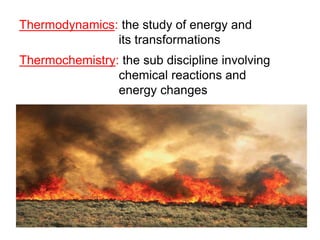














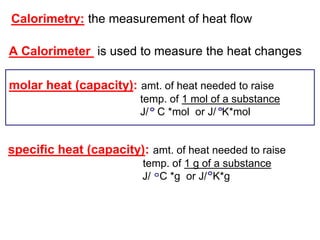






















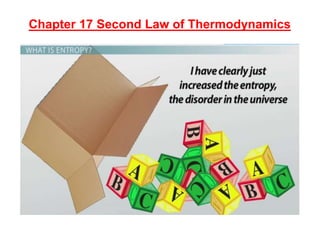


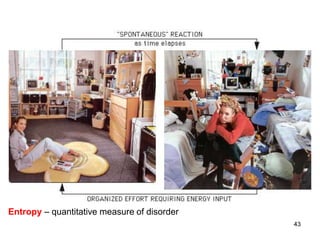




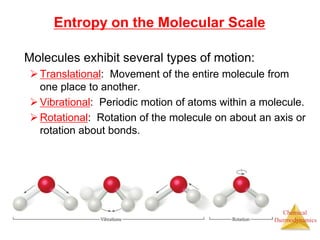


![The entropy change for a system(reaction) is calculated
from the entropies of the products and the reactants
ΔSo
system = Σ[So(products)] - Σ [So( reactants)]
ΔSo
system is Positive, then entropy increases
ΔSo
system is Negative,then entropy decreases
Calculations ](https://image.slidesharecdn.com/apchemthermodynamics-221107232457-906c1d9a/85/AP_Chem_Thermodynamics-pptx-51-320.jpg)






